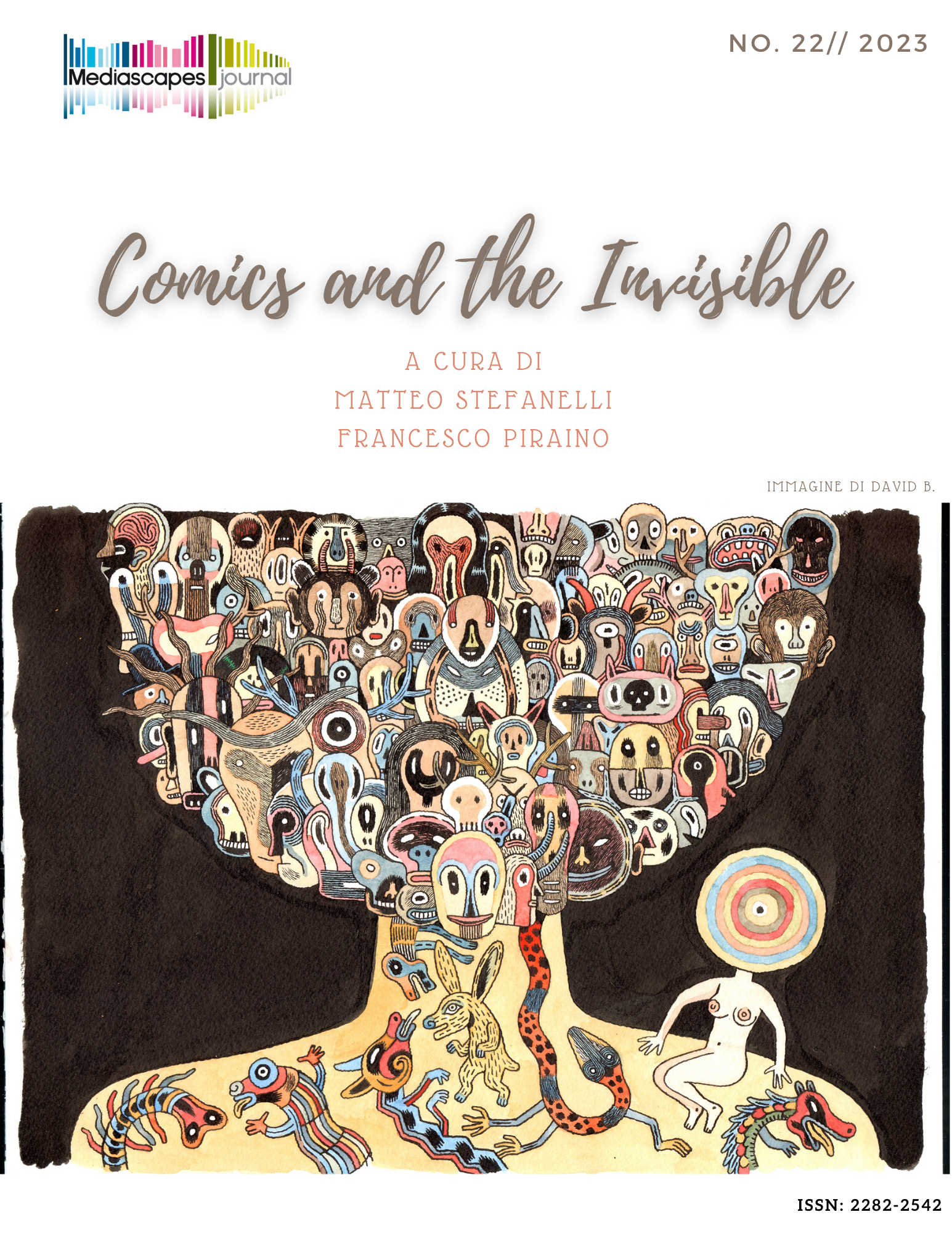Playing with the Invisible
Novel, Movies, Comics
Parole chiave:
invisible, comics, novel, cinema, semioticsAbstract
The told/untold dialectic is not entirely coincident with the shown/unshown. What is told presupposes (and therefore implies) an enunciator voice (i.e. a narrator); what is shown, only and sometimes, a point of view. What is untold simply is not: it is just an absence. What is unshown, instead, can be blank/white: the presence of an absence. In comics, a blank/white space or field can represent the missing action between one panel and the following one; or it can represent the background that is missing within a panel. In any case, the unshown, exactly like the untold, consists of what is not necessary to show (or tell) either because it is irrelevant, or because it is very easily inferable from what is shown (or told). But the unshown, unlike the untold, can appear before us, making visible the invisibility of what is not shown. In verbal discourse, i.e. in the novel, nothing is actually visible. Everything is mediated by the story made by a narrator who takes all responsibility for truth and point of view. In visual discourse, and particularly in comics, what is seen, and therefore visible, is crucial, but the gaze that makes things visible cannot in turn be seen, only inferred. The word focuses by naming, image by representing. However, while the narrator of a novel, unless proven otherwise, is always one and the same throughout the whole course of the text, the observer of a story in comics, like that of a movie, can change at any shot. Her/his invisibility is not compensated by any convention of sameness. An indeterminate observer is therefore accompanied, in comics, by an absence made visible. Cinema can make absence present by mean of the voice, but it cannot make absence visible. In comics, everything, except the gaze, can be shown, even invisibility.
##submission.downloads##
Pubblicato
Come citare
Fascicolo
Sezione
Licenza

TQuesto lavoro è fornito con la licenza Creative Commons Attribuzione 4.0 Internazionale.
Gli autori che pubblicano su questa rivista accettano le seguenti condizioni:
- Gli autori mantengono i diritti sulla loro opera e cedono alla rivista il diritto di prima pubblicazione dell'opera, contemporaneamente licenziata sotto una Licenza Creative Commons - Attribuzione che permette ad altri di condividere l'opera indicando la paternità intellettuale e la prima pubblicazione su questa rivista.
- Gli autori possono aderire ad altri accordi di licenza non esclusiva per la distribuzione della versione dell'opera pubblicata (es. depositarla in un archivio istituzionale o pubblicarla in una monografia), a patto di indicare che la prima pubblicazione è avvenuta su questa rivista.
- Gli autori possono diffondere la loro opera online (es. in repository istituzionali o nel loro sito web) prima e durante il processo di submission, poiché può portare a scambi produttivi e aumentare le citazioni dell'opera pubblicata (Vedi The Effect of Open Access).


